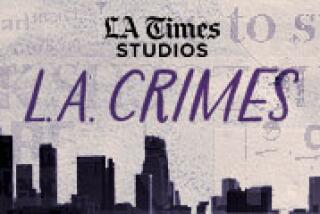Online Students Tangled in Finance Web
- Share via
Alarmed that fly-by-night diploma mills were fleecing students and the government, Congress in 1992 barred federal student loans and grants from anyone enrolled in correspondence schools. Federal dollars would now pay only for college anchored in the classroom.
Then the Internet caught fire in higher education. To an eager and growing market, it offered anything from a single college course to graduate degrees. Classrooms became irrelevant.
Today, the same federal law meant to prevent fraud is denying financial aid to students enrolled at reputable virtual colleges and universities where most or all courses are online. And now the law is getting a hard new look from those who say it’s outmoded and unfair.
How many students and how much federal money may be at stake is unclear, federal officials say. Nor does anyone know precisely how many schools are affected. The latest federal count of enrollment in distance education--1.4 million--is three years old. It’s anyone’s guess how many more people might attend college in cyberspace if they received aid.
“It’s really an access issue,” said Dawn Mosisa, an assistant vice president at the University of Maryland University College. The school, whose enrollment tops 71,000, is known chiefly for its campuses serving America’s armed forces worldwide and for its online degree programs, which draw a majority of their students from the mid-Atlantic region.
“Consider the married student earning $30,000 a year with two kids,” Mosisa said. “How much do you think they can afford in tuition? And how easy is it to figure out a way to take classes around their work schedules and their responsibilities?”
Online college is ideal for such individuals, but current law makes it harder for them to find programs and to pay for them, Mosisa said.
U.S. Rep. Johnny Isakson (R-Ga.), fresh from helping lead a yearlong look at how online education is flourishing, plans to push to get rid of those obstacles. He just wants to be sure, he said in a recent interview, “that credible Web-based . . . education is not discriminated against.”
Online advocates say it’s time.
“There’s going to be quite a lot of pressure on Congress to change this,” said David Baime, lobbyist for the American Assn. of Community Colleges. “This provision of the law was written in 1992, and that was a couple of eons ago in terms of distance learning.”
But there’s also opposition, and from an unexpected corner: teachers.
The American Federation of Teachers, whose million members include 120,000 in higher education, acknowledges the law could use improvement, but warns against losing safeguards.
“This law is on the books for a reason,” AFT President Sandra Feldman said in a statement last month, “besides the obvious education argument that education takes time, and time in class is beneficial.
“We, as a nation, experienced terrible scandals with trade and technical schools and correspondence courses before this law was enacted,” Feldman said. “An Internet-based degree program, like a correspondence school, is much harder to audit than a traditional program, and the chances for abuse are greater.”
At issue is a 1992 change to the Higher Education Act of 1965. Seeking to keep phony schools out of the federal trough, Congress set limits on the amount of education schools may offer at a distance and still participate in the federal student aid program, known as Title IV. This financial aid consists of student loans provided or backed by the U.S. government, and outright grants like the Pell for needy undergraduates.
The law defines “higher education” by ruling out institutions that offer more than 50% of their courses through correspondence or that enroll 50% or more of their students in correspondence courses. “Correspondence” has been interpreted to include online programs.
How much aid students may receive is further limited in that their schools’ academic year must be a minimum of 24 semester credits and 30 weeks of instruction. For schools that don’t operate on semesters, trimesters or quarters, federal regulation defines a school “week” as a seven-day period in which students get 12 hours of instruction, preparation or exams.
The intricate matrix of time and federal money gives headaches to financial aid officers.
It gets even more complicated when college is on the Internet, where time has new meaning--or none.
Taking online courses, students can attend class at home or in the dorm at any hour, and for any number of hours. Students who fall behind can watch lectures in an archive or see them again for review. Or they can barrel ahead at their own pace. Or take courses at two or more colleges at once. Concepts like “academic year” and “semester” become fluid, challenging government definitions.
Recognizing this, in 1998 Congress authorized an experiment. Starting in 1999, for five years it would waive limits on student aid for a small number of online schools and heavily online public and private colleges and universities.
In exchange, the U.S. Education Department is monitoring the programs for potential abuses.
One participant in the effort is tiny Southern Christian University in Montgomery, Ala.
Before the waiver, it edged close to losing federal student aid eligibility since 48% of its 250 students were in distance-learning programs. And the school needed to stay eligible, since 80% of its students require loans or grants. The waiver boosted both.
This spring, said Anita Crosby, SCU’s special projects coordinator, enrollment hit about 350--95% of those students online. Without the waiver, she said, “We were going to have to deny admission.”
The funding restrictions were also addressed by the Web-based Education Commission, a panel of Congress members and educators who last year looked at integrating education and the Internet.
The panel’s final report last December called for removing access barriers for online learners “while ensuring accountability of taxpayer dollars.”
Georgia’s Isakson was co-chairman of the panel with then-Sen. Bob Kerrey. The Nebraska Democrat now runs New School University in New York.
Isakson, a member of the House Education and Workforce Committee, wants that access-and-accountability recommendation to become reality. Among questions the panel asked, he said, was: “What is it we do in the paper-and-pencil classroom world that is prohibited in the Web world?”
He said he would back an initiative bringing worthy online schools into the federal-aid fold, while still guarding against education charlatans. “The federal government is not funding fly-by-night institutions by federal aid.”
*
Web-based Education Commission: https://www.hpcnet.org/webcommission
Federal project on distance education and student funding: https://www.ed.gov/offices/OPE/PPI/DistEd
More to Read
Sign up for Essential California
The most important California stories and recommendations in your inbox every morning.
You may occasionally receive promotional content from the Los Angeles Times.













